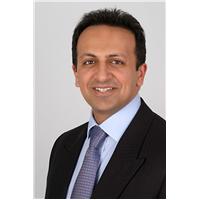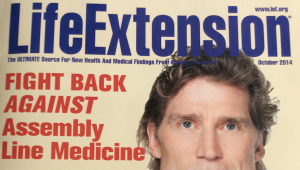
Rejuvenation not re-creation is the trend for cosmetic surgery procedures this year , according to the UKs leading surgeons. And the demand for subtlety is being driven by patients who have had the reality of extreme procedures brought home to them by TV makeovers.
There is also a growing number of doctors who are refusing to carry out ill-advised procedures such as overly large breast enhancements and liposuction on women who should diet first.
The UKs cosmetic surgeons foremost professional body, the British Association of Aesthetic Plastics Surgeons (BAAPS), has publicly denounced the pornography of television surgery. It described the Channel 5 programme Cosmetic Surgery Live, voyeuristic and added that its representation of the practice of plastic surgery was inappropriate.
The government has also expressed concern over the proliferation of clinics and what is calls confusing and unacceptable advertising and recently launched a web site to guide the public through this minefield www.dh.gov.uk/cosmeticsurgery
Nevertheless, cosmetic surgery and lunchtime cosmetic procedures such as Botox are now more popular than ever. According to BAAPS, the number of surgical procedures undertaken rose by 16% in 2004, when a total of 15,019 women underwent surgery in Britain. The most popular operations remain breast enlargement, face-lifts, eyebag removal, nose fixes and liposuction.
This year the industry is expecting more people than ever, particularly men, to undergo surgery. An even larger number are expected to have aesthetic procedures such as Botox, wrinkle fillers and skin resurfacing to avoid the knife. But the emphasis is on rejuvenation with a natural look, say the experts.
The hot cosmetic procedure of 2006, for women, will be brow shaping, using key hole surgery or non-surgically with Botox. The Yummy Mummy phenomenon with women returning to their pre-birth shapes weeks after giving birth will continue with mini tummy-tucks and liposculpture combinations.
Breast enlargement will again be the No 1 procedure but with smaller implants. Celebrities, are as usual, ahead of the game – Sharon Osbourne is just one who recently had her implants removed and replaced with smaller ones.
Mr Jag Chana, who works privately and for the NHS at Mount Vernon Hospital and is part of Santuary Cosmetic Surgeons, an independent network of top cosmestic pratitioners says: In 2006 I expect to see more women in their 30s asking for surgery but wanting a more conservative approach. Many of these trends are media and celebrity-driven and as result many have make the wrong choice, based on the wrong advise, which they have later regretted.
In the last year or so I have noticed an increase in the number of men asking for treatment and I expect this to continue. Men mostly want liposuction for problem areas such as the tummy, love handles and chest reduction. They are also opting for rhinoplasty and eyelid surgery. I have also seen an increasing number of women having surgery before weddings, even women in their 30s and this is something that will continue to grow.
Mr Rajiv Grover (pictured) is consultant plastic surgeon at the King Edward Vll Hospital in London and has a private practice in Harley Street. He specialises in aesthetic surgery of the face, breasts and body contouring. He agrees that 2006 will see women opt for implants that give a more natural look.
There was a lot of interest in the Baywatch look but there has been a backlash against breasts like those of Jordan. Women now want a more sensible approach.
2006 will see more patients expressing a preference for classical facial features emphasizing a natural appearance and avoiding the operated or surgical look. Patients dont want to look stretched like American women. They want to look rejuvenated not recreated.
Body contouring such as liposuction and liposculpture will remain popular. The use of liposculpture together with procedures such as a mini tummy tuck will increase in popularity especially in women who have completed their family and want to return to their former physique.
Jan Stanek, of Surgical Aesthetics in Wimpole Street, London predicts there will be a huge growth in those seeking to avoid surgery with the use of Botox and wrinkle fillers. He is also pioneering a new non-surgical treatment called fractional resurfacing, in which a laser is used to caused thousands of tiny holes in the skin surface, stimulating new collagen, tightening the skin so that it looks more youthful.
He says: Everyone wants to look young and there are a lot of middle-aged people looking older than they should. Although the extreme makeover is there if you want that, most people dont want to look different they just want to look younger, fresher and better. Botox is still the star as it works very well with no down time. It simply makes people look more relaxed.
Harley Street cosmetic surgeon Yannis Alexandrides sees an increasing number of patients who want less invasive procedures and as a result a new procedure known as the S lift, in which the face if lifted from inside the ear, is becoming more popular.
Mr Alexandrides says: The full facelift is the most popular procedure in my practice. But I believe that the S lift will become more popular because it is less invasive, it works and the recovery time is less. And it does not alter the persons face in an unnatural way.
Mr Alexandrides also supports the view that women are now wanting smaller sized breast implants.I would never advise anyone having an implant bigger than a C cup he adds.
He also expects to see a dramatic increase in aesthetic procedures such as light and laser skin rejuventation and also cheek and chin implants.
Cosmetic Surgery : Checklist – Useful questions to ask
In order to find out if cosmetic surgery is right for you will need to approach a numberof surgeons to see what they offer. You must insist on seeing your surgeon personally and check his or her qualifications with the professional body, the British Association of Aesthetic Plastic Surgeons (BAAPS) www.baaps.co.uk
Questions for the surgeon
Will you carry out the operation?
What are your qualifications?
How long have they carried out this procedure and how often?
Do they have professional indemnity insurance in case the procedure goes wrong?
Costs
What is the cost of the consultation with the surgeon?
What will be the cost of the operation and any further treatment afterwards?
Should there be a complication who will pay for it to be corrected?
The operation
How long does the operation take?
Is the treatment painful and if so what form of anaesthesia is used?
Is all equipment used sterile and used only for me?
Are there any risks?
What are the complications and success rate of the procedure in this clinic?
Can I see before and after photographs?
Can I speak to anyone else that you have treated?
Will you want to inform my GP about my treatment?
After treatment
How long will I be required to say in hospital?
What type of aftercare will I receive as part of the operation?
Will I need pain relief afterwards?
Will I have swelling or bruising and how long will this take to go down?
How long will I have to be off work?
When will I be able to see the full results?
What will happen if I am unhappy with any aspect of the treatment?
MOST POPULAR COSMETIC PROCEDURES
FACE-LIFTS:
There are a variety of techniques in use today including the deep face-lit that tightens muscles under the skin. The most usual procedure is for the surgeon to remove the skin and lift it, tightening the muscle through tiny incisions near the ear. There is also a mini-lift. Recovery time varies. A full face-lift requires at least one night in hospital and usually two. Complications can includeinfection, blood clots, numbness, tightness, asymmetry, thickened or raised scars, and nerve injury. The results are permanent but since the ageing process continues you may need another operation in a few years.A basic face-lift costs from £6- 8,000
RHINOPLASTY (NOSE SURGERY)
In this operation the nose is reshaped. This may involve reducing the bridge, shaping the tip or altering the angle. It can take up to a month to heal and there will be bruising and swelling mostly around the eyes. Risks include breathing problems, infection and bleeding. Cost up to £6,000.
BREAST AUGMENTATION AND UPLIFTS:
An implant is placed under the breast tissue to provide volume and shape. Sagging breasts can be uplifted in an operation known as a mastopexy. Spare skin may be removed and an implant inserted. Healing takes up to one month. Complications may include infection, bleeding, poor positioning, silicone leakage and scarring. There can be a risk of nipple numbness. Costs vary but in the case of implants can be up to £7,000 depending on the quality of implant.
ABDOMINOPLASTY(TUMMY TUCK)
Also known as an abdominal reduction or abdominoplasty, the tummy tuck, is surgery that flattens the stomach by removing excess fat and skin, and tightening the muscles of the abdominal wall. Incisions are usually made near the bellybutton and across the pelvic area in a U or V shape. Healing can take nearly two months as the operation is major surgery and a general anesthetic is required. A short hospital stay is required. Risks include blood clots, infection, raised scars and prolonged numbness. There will be scarring.
Costs between £5,000-7,000.
LIPOSUCTION
Liposuction is a surgical method of reducing fatty bulges from thighs, hips, waist, buttocks, arms, chin, knees, ankles and elsewhere, through tiny incisions. Healing takes up to two weeks and there is usually a lot of bruising and pain. This is safe operation provided it is not carried out on small areas of the body. The complications include infection and contour irregularities. It costs between £4-6000.
BLEPHAROPLASTY(upper and lower eyelid surgery)
This surgery corrects sagging upper lids bags below the eyes and works by removing excess fat and skin, and tightening loosened muscle. The surgeon works through incisions in the crease of the upper eyelid and below the lash line which will not be visible after healing. It takes up to two weeks to heal. Complications could include tighteness and difficulties closing the eyes if too much skin is removed. Costs between £3,500-5,000.
Contacts:
Mr Rajiv Grover BSc MB MD FRCS (Plast)Consultant Plastic Surgeon King Edward Vll Hospital, W1 & at 144 Harley Street, W1. www.rajivgrover.co.uk T: 020 7486 4301
Jag Chana BSc, MBBS MD FRCS (Eng) FRCS (Plast), holds private clinics at the BMI Bishopswood Hospital, Northwood T: 0800 169 7606 and the BUPA Hospital, Bushey, Herts T: 020 8950 9090.
Yannis Alexandrides, MD, American Society of Plastic Surgeons, 111 Harley Street,W1. www.kosmeticos.com; 020 7486 8055
Jan Stanek FRCS, 60 Wimple Street, W1, www.surgicalaesthetics.com T: 020 7487 4454





